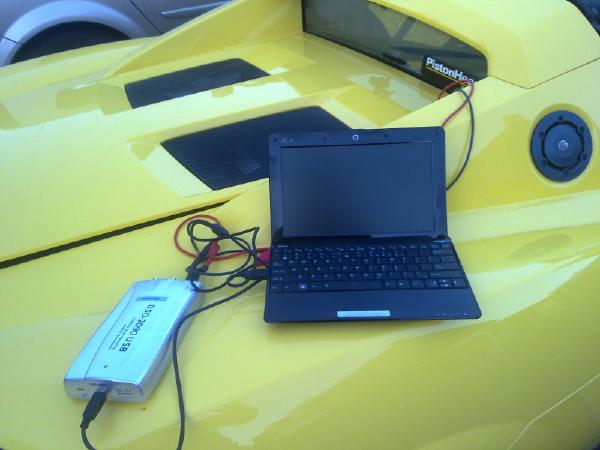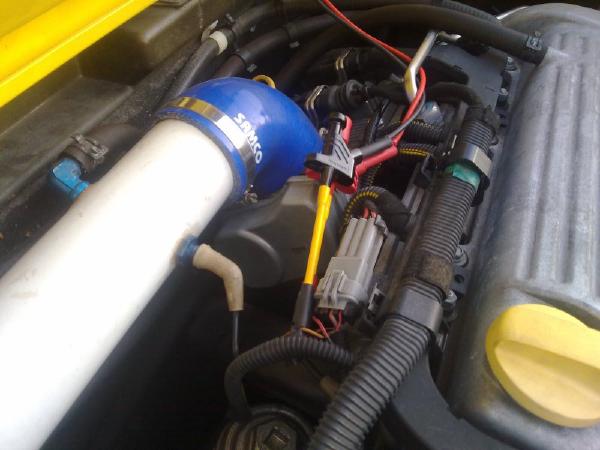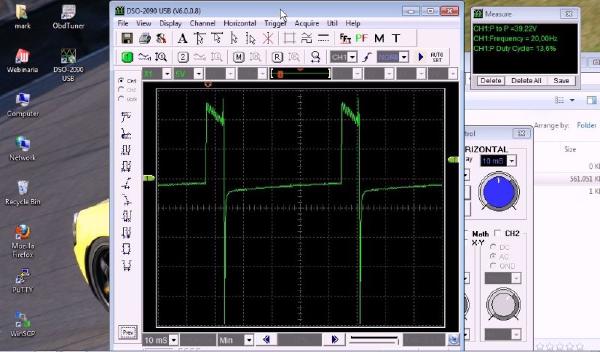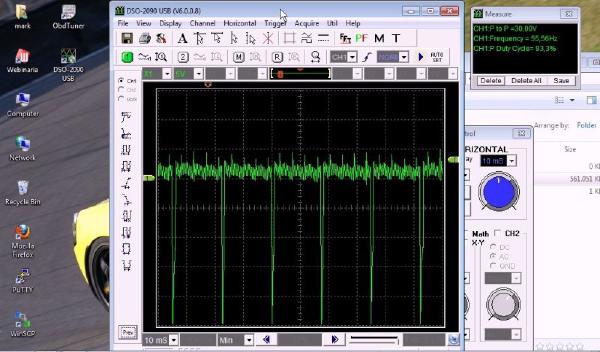The maximum dutycycle of an injector is important. When it becomes too high, heat problems might occur but more importantly the accuracy of the fueling will diminish A usual upper limit is around 80 to 85%. The ECU has a possibility to up the maximum dutycycle of the injectors, to keep the fueling in order. If this change isn’t made, the injectors won’t be able to deliver enough fuel for a tuned engine (2.4 intake + good exhaust). To test the actual dutycycle of the injectors, we connected a scope to my car. [21082010520.nl.jpg 21082010521.nl.jpg 21082010522.nl.jpg full.nl.jpg normal.nl.jpg] The scope is connected to a notebook where the software shows the information. With special clamps the scope is connected to one of the injectors. [21082010520.nl.jpg 21082010521.nl.jpg 21082010522.nl.jpg full.nl.jpg normal.nl.jpg] With a low engine load, the scope shows the following picture. [21082010520.nl.jpg 21082010521.nl.jpg 21082010522.nl.jpg full.nl.jpg normal.nl.jpg] With high load and high RPM’s we got the results below. [21082010520.nl.jpg 21082010521.nl.jpg 21082010522.nl.jpg full.nl.jpg normal.nl.jpg] According to the scope the dutycycle is around 93%. Repeating this test gave values between 90% and 93%. These values are only seen at high RPM, so the injectors aren’t run very long at these dutycycles. In the piece I wrote on injectors there is information on the relation between dutycycle, injector size and maximum power. Based on thie information the following formula can be used: Maximum power = SF * (D / 100) * 4 / KWhere:
Filling in the formula you get the following values: Maximum power = 252 * (90 / 100) * 4 / 4.6 = 199hp |